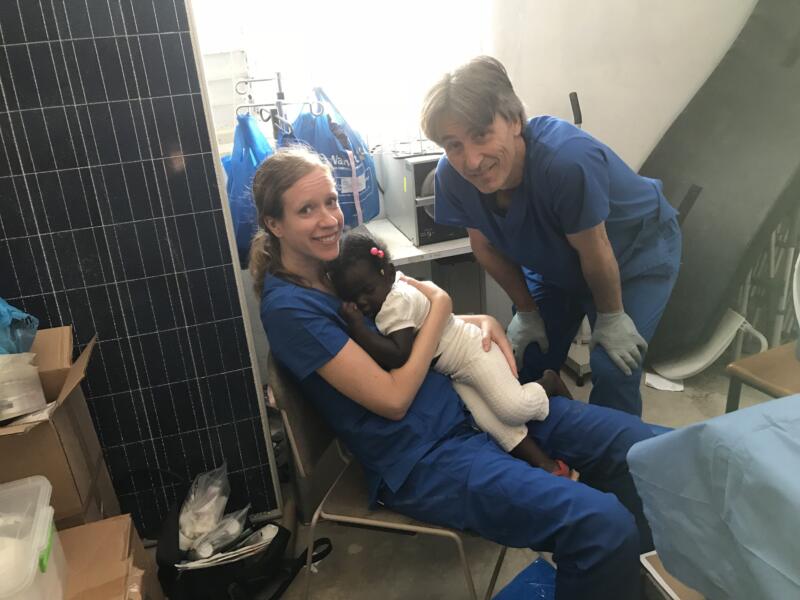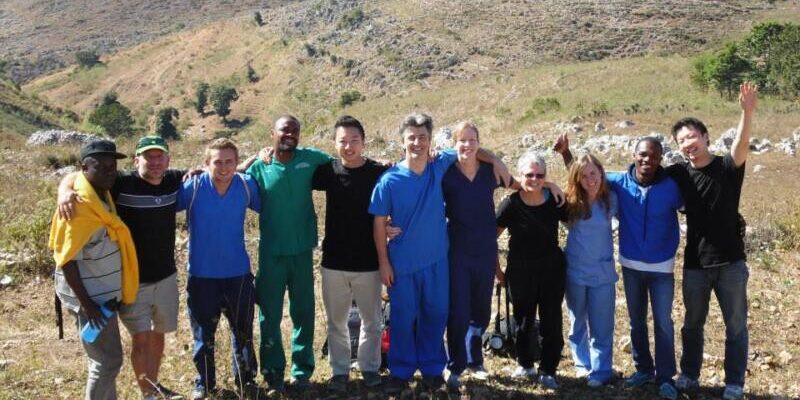Creating Stronger and Financially-Sustainable Clinics in Haiti
Tim Randolph, PhD, MT(ASCP)
 |
 |
| Randolph World Ministries, Inc., is operated by Tim and Liz Randolph out of their home. They make two annual medical mission trips to Haiti with teams that have included laboratorians, physician assistants, physicians, nurses, occupational therapists, and health information managers. |
Randolph World Ministries, Inc., (RWM) is a faith-based, 501c3, medical mission ministry, founded in 2000 and currently operating in Haiti. Our primary mission is to improve healthcare in Haiti using a sustainable medical mission model. The focus of most medical mission groups is to deliver direct patient care during a typical 7- to 10-day mission trip. Although this medical mission model clearly benefits those served, there are several disadvantages often overlooked by mission team members.
Disadvantages of the Typical Mission Trip Model
First, and most notable to laboratory professionals, is the absence of laboratory services. From personal experience I estimate over 90 percent of medical mission groups—probably more like 99 percent—do not bring a lab. Second, due to limitations and fees for checked bags, most groups do not bring a comprehensive pharmacy. Third, most medical mission participants are not well versed in language and culture and do not know what diseases to expect due to a paucity of publications. Fourth, and most importantly, most teams set up a “mobile clinic” (often free) in an area where Haitian healthcare is available.
Haitians assume that North American mobile clinics provide superior care. Considering that local Haitian clinics have a functioning lab; a deeper pharmacy; and Haitian physicians who speak the language, know the culture, and are well versed in the conditions affecting their people, it is my observation this is usually not the case. I have observed well-intentioned Americans conduct a mobile clinic with nothing more than vitamins and NSAIDS. Although both are needed and helpful, most Haitian patients assume they received curative care from the bag of pills they received.
What is overlooked most by foreign medical mission teams is the impact mobile clinics have on the stability and survival of local Haitian clinics. Due to high unemployment and low wages, many Haitians lack the financial resources to access healthcare. However, most faith-based clinics treat patients regardless of their ability to pay. This creates a financial deficit for most Haitian clinics that is exacerbated when free mobile clinics attract paying patients away from local clinics. This problem is magnified in small villages and the countryside where most Haitians live, sometimes resulting in local clinic closures.
RWM’s Sustainable Model
The RWM model is to partner with local Haitian clinics to evaluate their procedures, equipment, and systems to improve their services through education, training, and materials support. This creates sustainable improvements to the local clinics that strengthen, rather than weaken, them financially. Currently RWM has 30 Haitian clinic partners scattered across Haiti with whom we communicate regularly and visit on a rotational basis biannually during our medical mission trips.
In addition to clinic partnerships, RWM conducts mobile clinics but only in areas where healthcare is not available, so as not to compete with local clinics. We also charge a nominal fee to dissuade healthy people from accessing our services. We always bring a large and comprehensive lab and pharmacy and we also recruit Haitian physicians to work with our teams creating a two-way consultation system for the more difficult cases. Our large network of clinic partners creates a deep referral system for patients with health concerns beyond our capabilities. Lastly, we donate our clinic fees back to the local leaders and encourage them to work with us to create a local clinic. To illustrate this model in action, 19 years ago our first clinic partner had two lab staff working in an 8’ x 8’ lab performing 13 tests. That same lab today has six staff and three lab rooms, each measuring 12’ x 15,’ and performs 42 tests.
Almost all Haitian clinics do not have the infrastructure (finances, electricity, clean water, refrigeration, climate control, waste disposal, etc.) to integrate modern systems. Therefore, RWM seeks to create new methods1-3 or identify existing methods worldwide that are simple and inexpensive to be incorporated into Haitian clinics. Our initial goals are to find and correct errors through education and training, then introduce new methods, procedures, and systems that work within the limitations facing Haitian clinics to create stronger and financially-sustainable clinics to better serve patients well into the future.
The First Sickle Cell Center of Haiti
Our most recent undertaking is to tackle the problem of sickle cell (SCD) in Haiti. The prevalence of HbS in Haiti is about 15 percent4 but the birth rate and mortality rate for those with SCD are unknown. Based on African data5, we estimate the death rate of SCD in Haiti by age five years to be between 75 and 80 percent. By contrast, the mortality rate in the United States by age five years is <1 percent.6-8
RWM seeks to solve this problem by developing the first Sickle Cell Center of Haiti to deliver comprehensive diagnostic testing, standard of care, and country-wide education to reduce mortality. Since the standard of care will be expensive and many patients will have limited finances, we plan to close this financial gap using a sustainable business model. Rather than ask for monthly donations indefinitely, we plan to open a chain of laboratory supply companies to sell a wide variety of laboratory supplies.
Based on what Haitian labs need, what is available to them for purchase, and current pricing, we are confident our laboratory supply companies can expand offerings to laboratories at reduced costs. This model will increase diagnostic capabilities and improve financial stability of Haitian clinics while creating jobs and generating profits to offset the costs to operate the Sickle Cell Center of Haiti. We are seeking start-up support to construct the Sickle Cell Center and to get the laboratory supply companies started. Once launched we anticipate profits from the laboratory supply companies will sustain the operating costs of the Sickle Cell Center, indefinitely.
Learn more about Randolph World Ministries, Inc.
References
- A Method of HbF Determination for Potential Use in Underdeveloped Countries. Schumacher S and Randolph TR. Clin Lab Sci. Vol. 25/Number 4, Fall 2012, 212-218.
- Novel Test Method (Sickle Confirm) to Differentiate Sickle Cell Anemia from Sickle Cell Trait for Potential Use in Developing Countries. Randolph TR and Wheelhouse J. Clin Lab Sci. Vol 25/Number 1, Winter 2012:26-34.
- Development of a Falling Drop Hemoglobin Method for Resource-Poor Settings. Stumpf, MS, Sinha R, Golob N, Hoerner, Chen C, and Randolph TR. Clin Lab Sci. 2017;30(3):131-138.
- Randolph TR. Estimated prevalence of sickle cell in northern Haiti. Clin Lab Sci. 2010;23(2):79-83.
- Grosse SD, Odame I, Atrash HK, Amendah DD, Piel FB, and Williams TN. Sickle Cell Disease in Africa – A Neglected Cause of Early Childhood Mortality. Am J Prev Med. 2011;41(6): S398–S405.
- CDC. Mortality among children with sickle cell disease identified by newborn screening during 1990-1994 – California, Illinois, and New York. DC, Morbidity and Mortality Weekly Report. 1998; March 13, 1998/vol. 47/No. 9:169-172.
- Lanzkron S, Carroll CP, and Haywood C. Mortality rates and age at death from sickle cell disease: US, 1979-2005. Public Health Reports. 2013;128(2):110-116.
- Yanni E, Grosse SD, Yang Q, and Olney RS. Trends in pediatric sickle cell disease-related mortality in the United States, 1983-2002. J Pediatr. 2009;154(4):541-545.
Tim Randolph is associate professor of medical laboratory science at Saint Louis University and founder of Randolph World Ministries, Inc.
